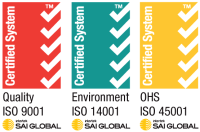The Environmental Benefits of Screw Pile Foundations
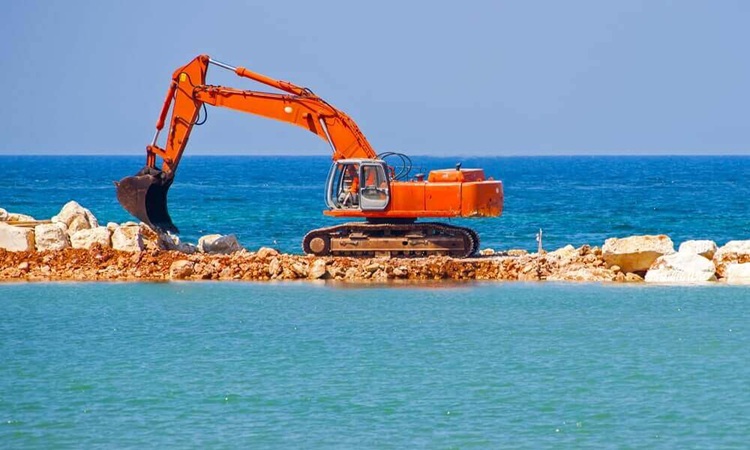
Screw pile foundations are a sustainable alternative to traditional concrete footings. They reduce carbon emissions, minimise site disruption, eliminate the need for water in installation, and can be recycled or reused. This guide explores how screw piles support eco-friendly construction across Australia.
Sustainability is no longer a nice-to-have in construction – it’s a necessity. As councils, clients, and codes push for greener practices, the foundation system you choose plays a significant role in the environmental footprint of a project.
Screw pile foundations offer a smarter, cleaner, and more sustainable option compared to traditional concrete. In this guide, we’ll explore how sustainable screw piles contribute to environmentally friendly construction across a range of Australian conditions.
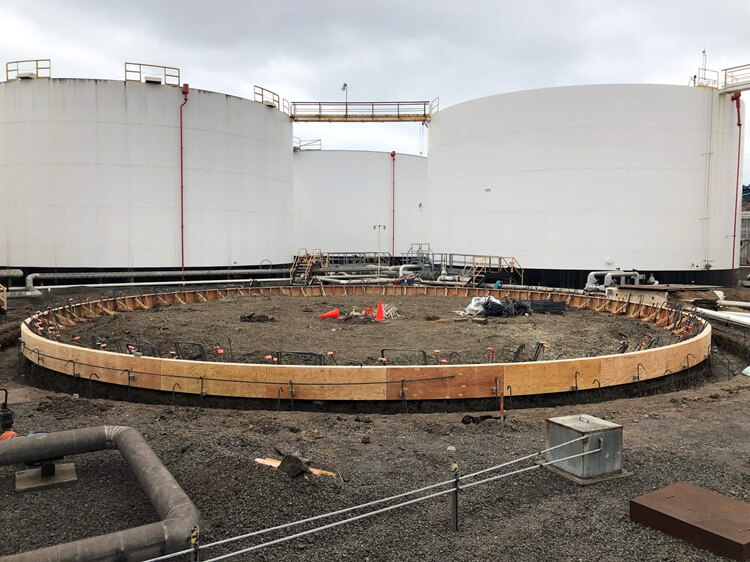
Why Sustainable Foundations Matter
The construction industry is a major contributor to global emissions, with concrete alone accounting for around 8% of global CO₂ output. Excavation, water consumption, and site clearing also damage soil ecosystems and release stored carbon. Choosing sustainable building foundations helps reduce these impacts and align projects with modern environmental standards.
1. Lower Carbon Footprint than Concrete
Steel screw piles require significantly fewer emissions to manufacture and install compared to traditional concrete foundations. There’s no need for batching, formwork, or curing, and fewer trucks are required to deliver materials.
Many screw piles use recycled steel, and the reduced need for cement further cuts emissions. Over the lifecycle of a project, this adds up to measurable reductions in environmental impact.
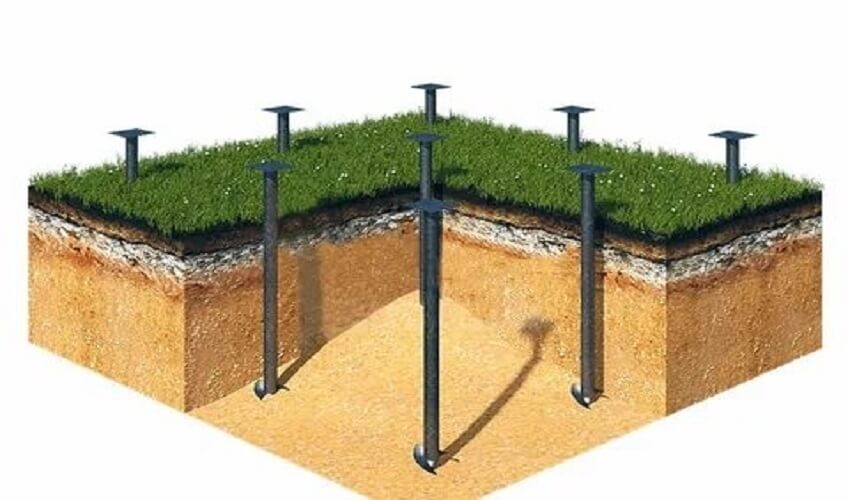
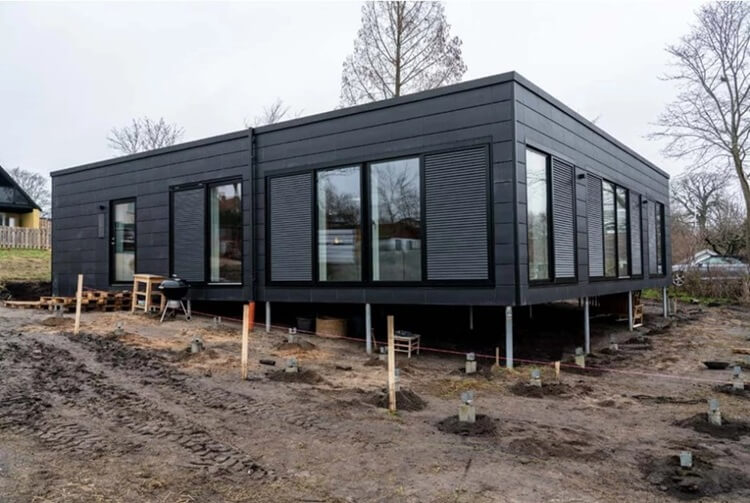
2. Minimal Site Disturbance
Unlike bored piers or strip footings, screw piles don’t require excavation. They screw directly into the ground with low-impact machinery. That means:
- Less topsoil removal
- Minimal disruption to native vegetation
- Better preservation of root systems and habitat zones
This makes screw piles ideal for eco-friendly foundations in sensitive or protected areas.
3. No Water Required for Installation
Concrete needs water to mix, pour, and cure. In contrast, screw piles are installed dry. This makes them suitable for remote locations or drought-prone areas where water is scarce.
Reduced water use also means less erosion, less contamination, and a lower risk of disrupting the water table or nearby ecosystems.
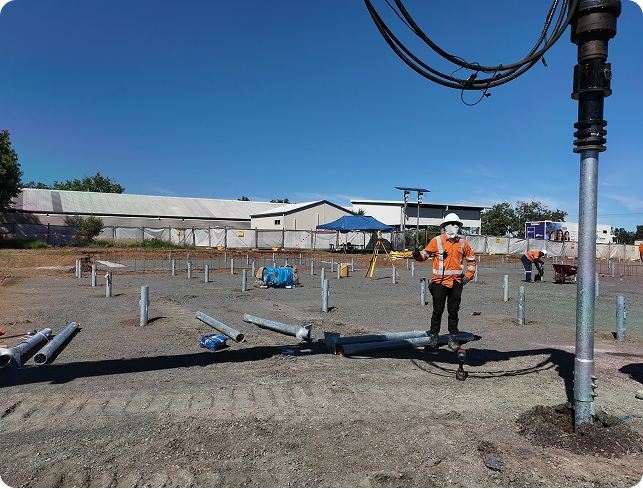
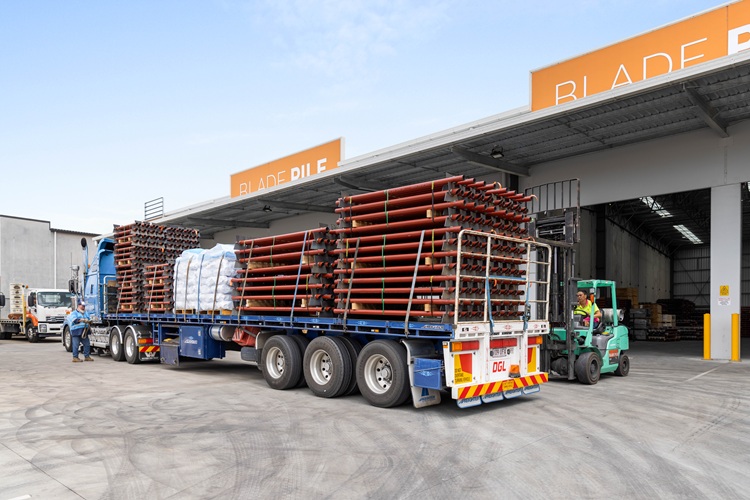
4. Reusable, Recyclable, and Removable
Screw piles can be unscrewed and reused in another location. At the end of life, they can be fully recycled. This makes them one of the few environmentally friendly foundations that align with circular economy goals.
They’re ideal for temporary or relocatable builds, like modular homes, mining camps, or event infrastructure.
5. Designed for Australian Conditions
Blade Pile’s screw piles are engineered for Australian soil, climate, and site requirements. This includes reactive clay, flood zones, bushfire zones, and coastal environments.
Protective coatings extend lifespan and reduce maintenance, making them a long-term, sustainable solution for foundations.
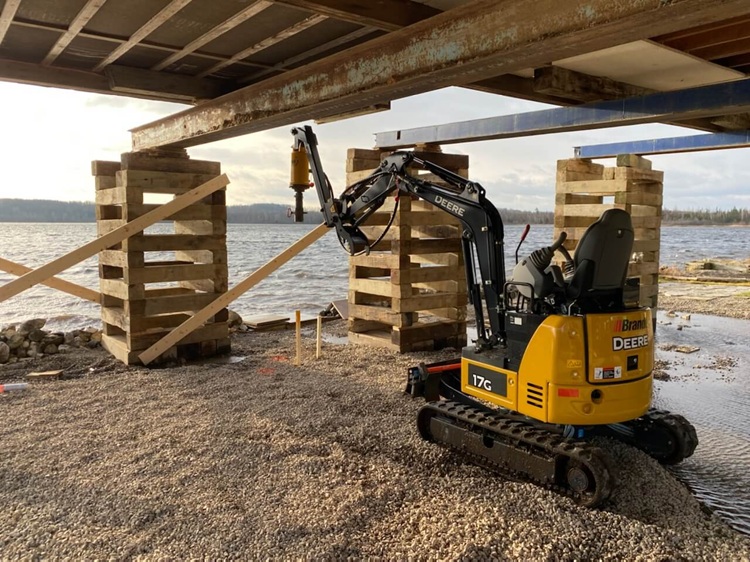
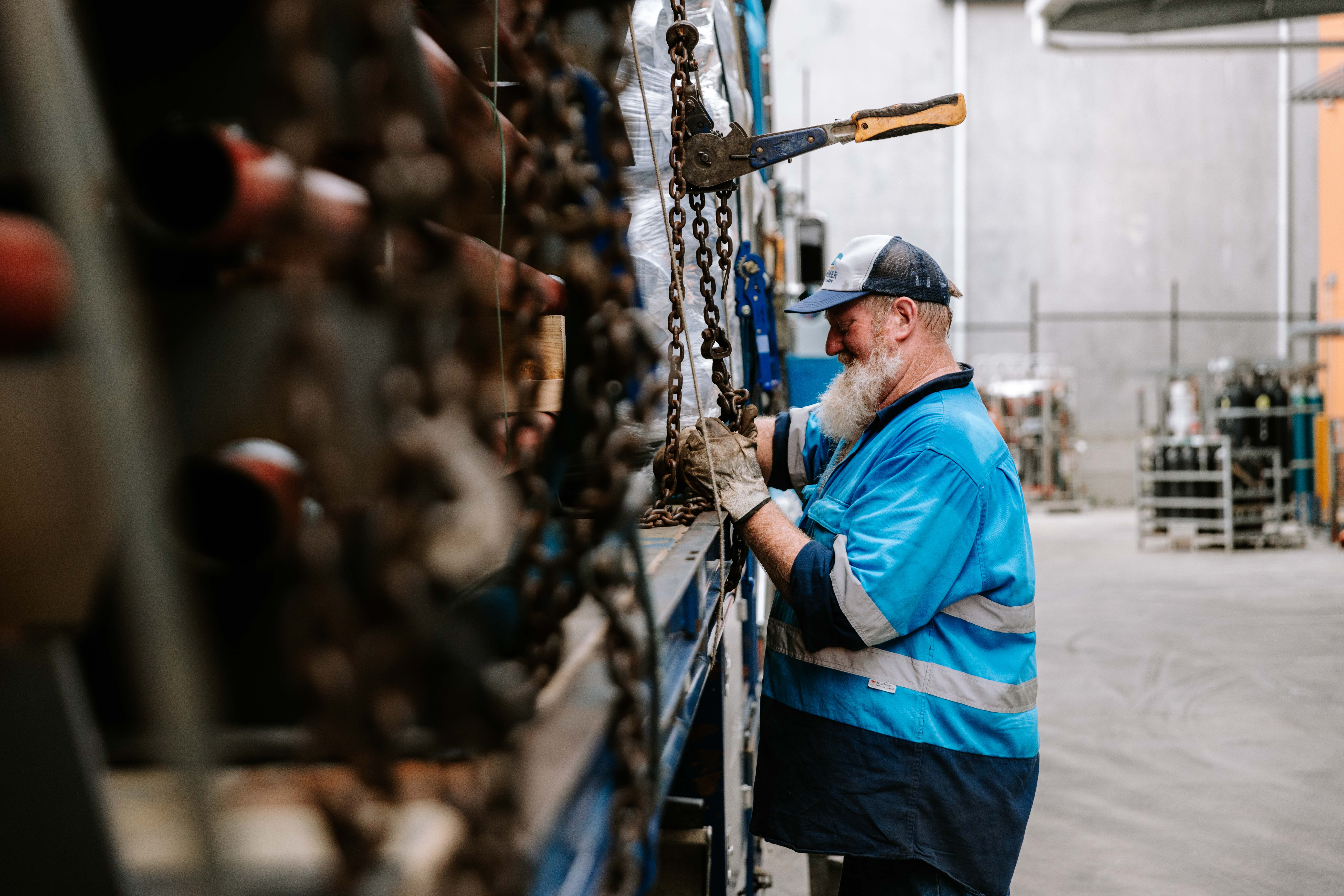
6. Reduced Lifecycle Emissions
Sustainable foundations aren’t just about the install—they’re about long-term performance. Screw piles reduce emissions over the lifespan of a structure by:
- Requiring fewer repairs due to soil movement
- Supporting modular or lightweight structures
- Avoiding concrete degradation in poor drainage conditions
Less repair work = fewer materials, fewer trades on site, and lower emissions.
7. Faster, Cleaner, and Cheaper Installation
Installing screw piles is quicker, uses less machinery, and requires no soil removal or formwork. That means:
- Less time on site
- Fewer emissions from heavy equipment
- Lower fuel use and labour costs
They offer a rare combination of sustainability and efficiency, making them ideal for sustainable screw piles in Australia.
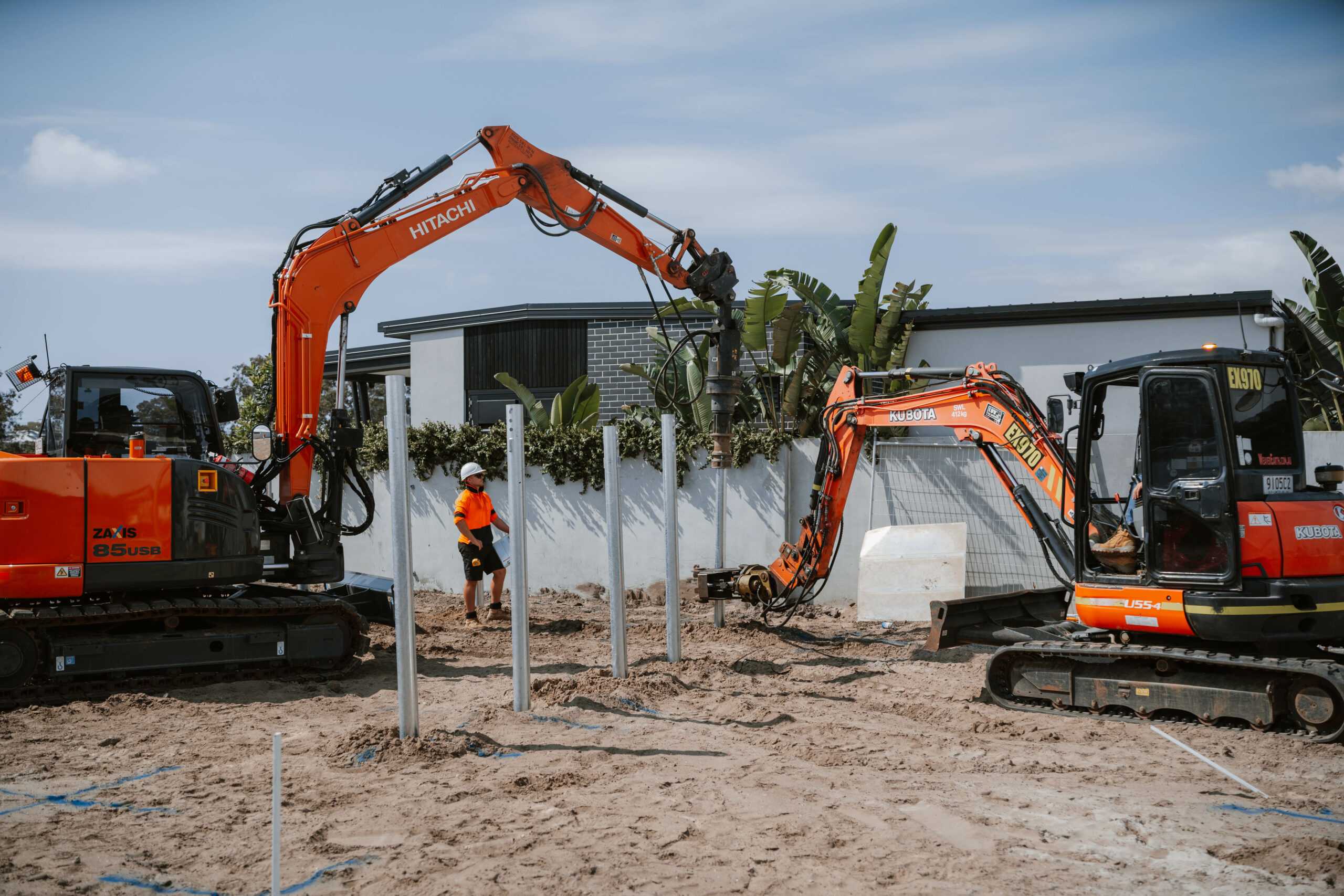
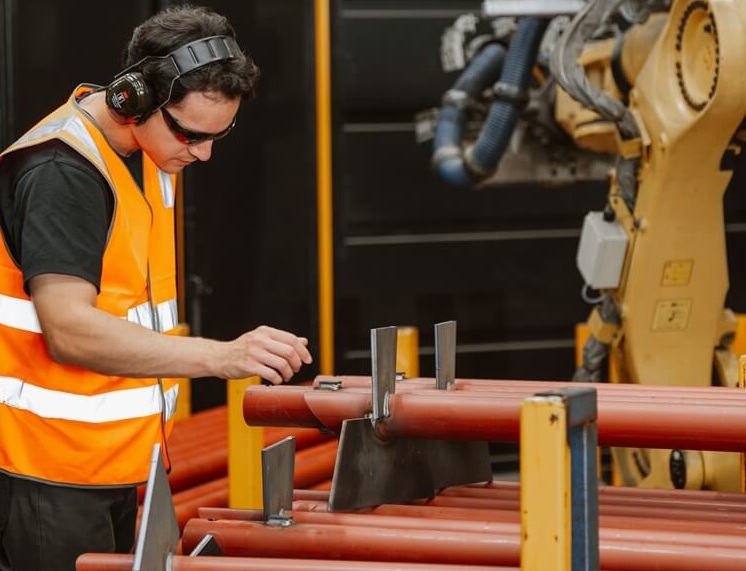
8. Eligible for Green Building Credits
Screw pile foundations can contribute points toward Green Star, NABERS, and other sustainable design certifications. Their recyclability, low impact, and compatibility with off-site construction make them suitable for:
- Public buildings
- Schools
- Commercial green builds
- Council and government projects
9. Raised Floor Systems and Flood-Resilient Design
Screw piles work well with raised floor foundation designs, which are ideal for flood-prone, coastal, or sloped sites. These elevated solutions:
- Keep homes above flood levels
- Improve ventilation beneath the building
- Protect timber or lightweight flooring from water damage
This makes them a key part of sustainable foundations planning in regions vulnerable to climate extremes.
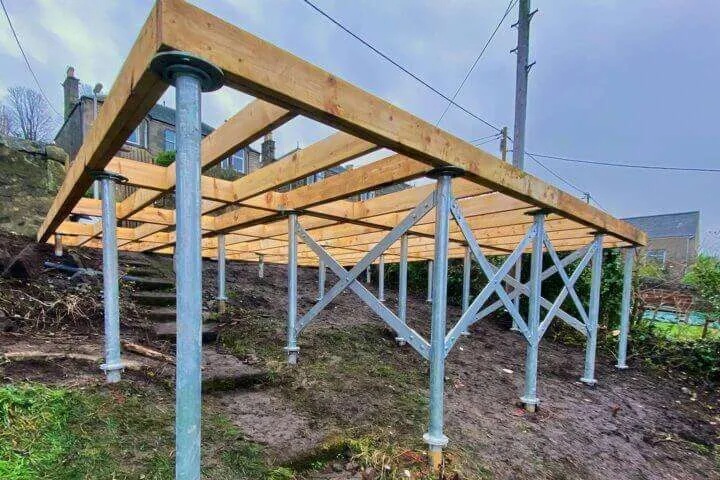
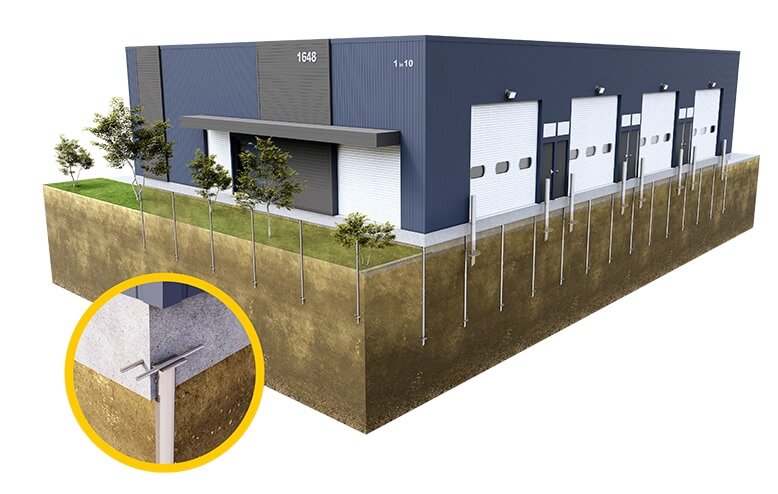
10. Types of Raised Floor Foundation Systems
Screw piles support a variety of raised foundation types, including:
- Raised slab foundation: Elevated slab on steel piles to prevent water damage
- Raised pier foundation: Posts and beams supported by screw piles
- Subfloor systems: Bearers and joists elevated off the ground
These designs help avoid soil disruption, use fewer materials, and allow better access for maintenance.
Concrete vs Screw Pile Foundations: Environmental Comparison Table
|
Feature |
Concrete Foundations |
Screw Pile Foundations |
|
Carbon Emissions |
High (cement production is energy-intensive) |
Significantly lower (especially with recycled steel) |
|
Site Disturbance |
Requires excavation and spoil removal |
Minimal disturbance, no spoil |
|
Water Use |
High (mixing and curing) |
None |
|
Reusability |
Non-reusable |
Reusable and removable |
|
Recyclability |
Limited; often sent to landfill |
Fully recyclable (steel) |
|
Installation Time |
Slower (curing required) |
Fast and efficient |
|
Suitable for Sensitive Sites |
Limited |
Ideal (wetlands, tree zones, remote builds) |
|
Lifecycle Emissions |
Higher (requires more maintenance over time) |
Lower (durable with minimal repair needs) |
Cost Considerations: Are Sustainable Screw Piles Expensive?
Not necessarily. The cost of screw pile foundations is often offset by the savings in:
- Excavation
- Water usage
- Labour hours
- Delays from weather
Plus, long-term savings from fewer repairs and greater durability make them a cost-effective solution over time.
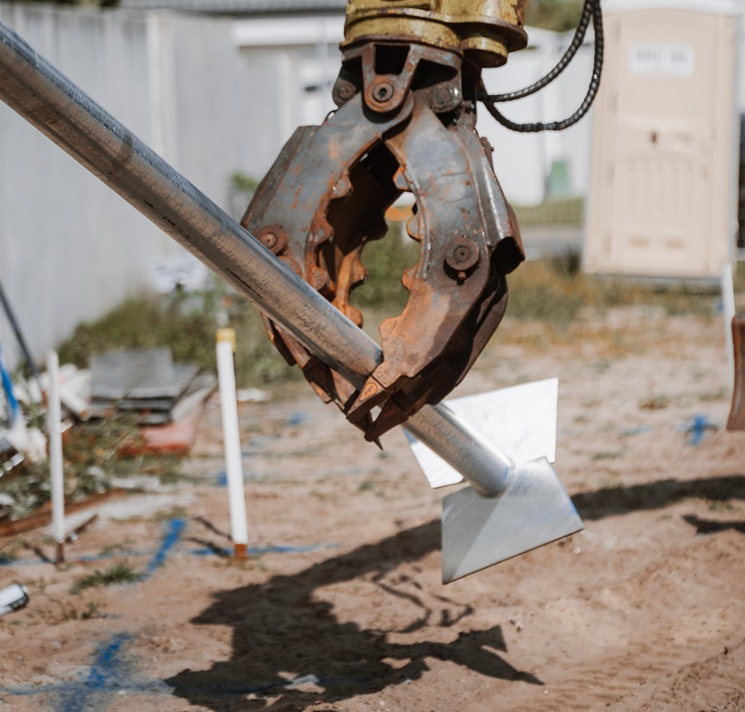
Types of Screw Piles and Their Environmental Use
Different projects require different types of screw piles. Blade Pile supplies:
- Straight shaft piles
- Helical piles
- Micro piles
- Slab support piles
Each one is designed for specific load conditions and soil types. Choosing the right one reduces waste and ensures efficient performance, which supports sustainable foundations planning.
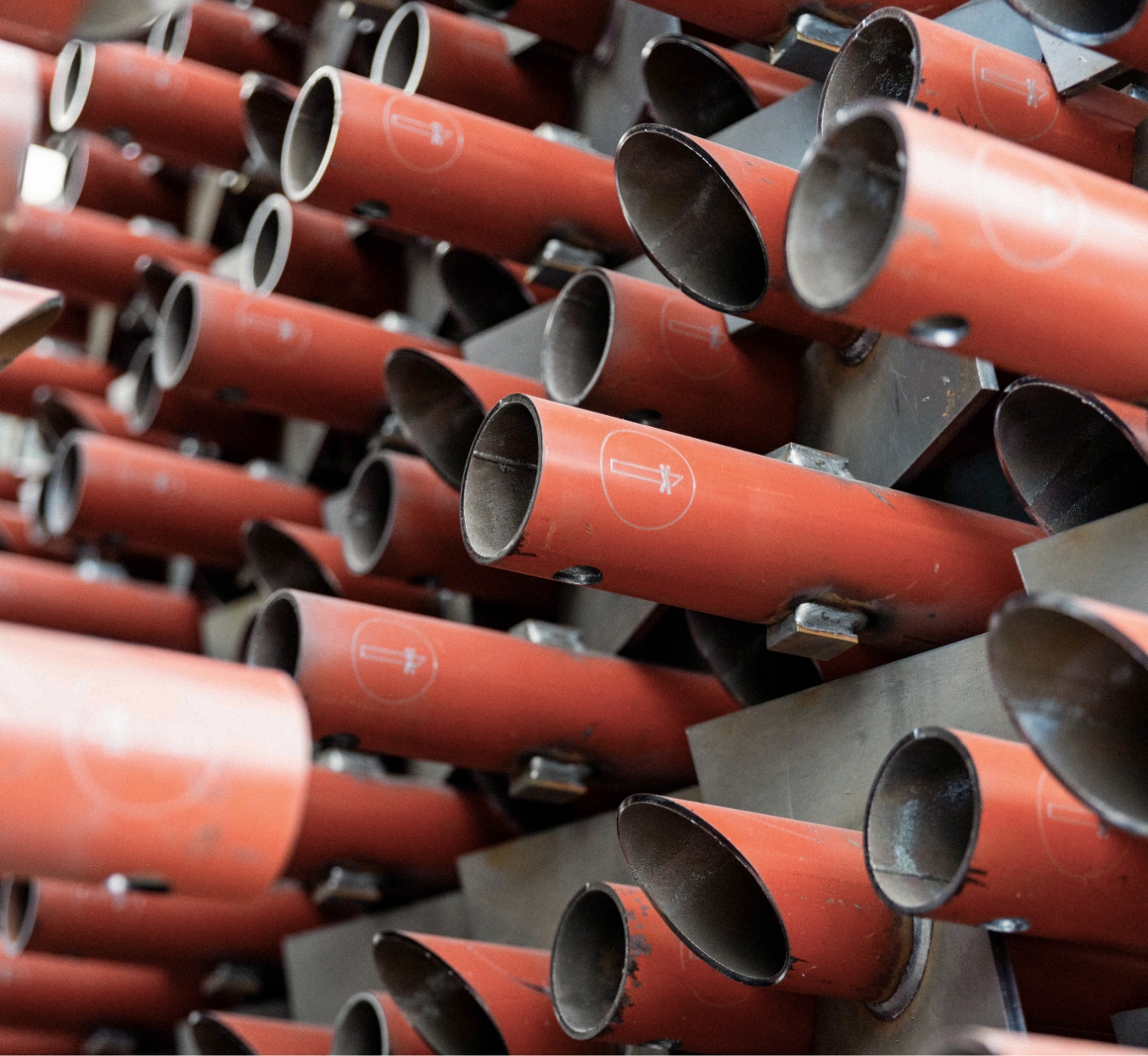
Relevant Codes and Standards for Sustainable Screw Piles
In Australia, screw pile design and installation must meet regulatory guidelines such as:
- AS 2159:2009 – Piling – Design and installation
- AS 2870:2011 – Residential slabs and footings
- National Construction Code (NCC) – Volume 1 and 2 compliance
- Green Star Design & As Built – For projects seeking environmental certification
These codes ensure that screw pile systems meet safety, structural, and environmental benchmarks. Working with a certified screw pile manufacturer helps ensure full compliance while meeting sustainability goals
Frequently Asked Questions
Yes. Screw piles are low-impact to install, require no excavation or water, and can be recycled at the end of life. Their minimal disturbance to the site and long-term durability make them a popular choice for sustainable construction projects across Australia.
Absolutely. Screw piles are typically made from galvanised or high-grade steel, which is fully recyclable. Once removed, they can be melted down and reused without loss of strength or performance, supporting circular economy goals in building and construction.
Yes. One of the unique environmental benefits of screw piles is their reusability. If a structure is temporary or needs to be relocated, the piles can be unscrewed and used again, saving materials and reducing the demand for new steel.
Screw piles can be installed with compact, low-fuel equipment, making them ideal for remote and regional projects. They require no water or concrete delivery and preserve surrounding vegetation and soil health, aligning with rural sustainability goals.
The best screw pile depends on your soil type, load requirements, and location. Helical screw piles are often preferred for sustainability due to their high strength and minimal ground disturbance. Blade Pile provides expert advice on choosing the right foundation.
A raised floor foundation elevates a building above ground level. Screw piles support the load via piers or beams. This design protects against water ingress and improves airflow beneath the structure, making it suitable for flood-prone or humid areas.
Yes. Raised floor systems supported by screw piles minimise concrete use, reduce site disturbance, and improve ventilation. They are especially suited to climate-sensitive locations and help reduce the risk of termite damage, wood rot, and mould buildup.
Raised slab foundations combine a concrete slab with an elevated screw pile base. This method protects against ground moisture, flood risk, and movement in reactive soils. It offers better environmental performance than deep excavation and slab-on-ground approaches.
A raised pier foundation uses vertical supports anchored with screw piles. It allows for flexible elevation, improved site drainage, and minimal soil disruption. It’s ideal for sloped blocks, coastal builds, or modular projects prioritising sustainability.
Why Screw Piles Are a Smarter Environmental Choice
Screw piles support greener building practices through lower emissions, reduced water use, minimal disturbance, and full recyclability. They pair seamlessly with raised foundation types, including raised slab foundations, raised pier foundations, and other raised floor foundation systems.
Blade Pile delivers fully engineered, Australian-made screw pile systems for residential, commercial, and government projects, prioritising sustainable design.
Discover our sustainable screw pile systems or contact us today to explore more innovative ways to build from the ground up.
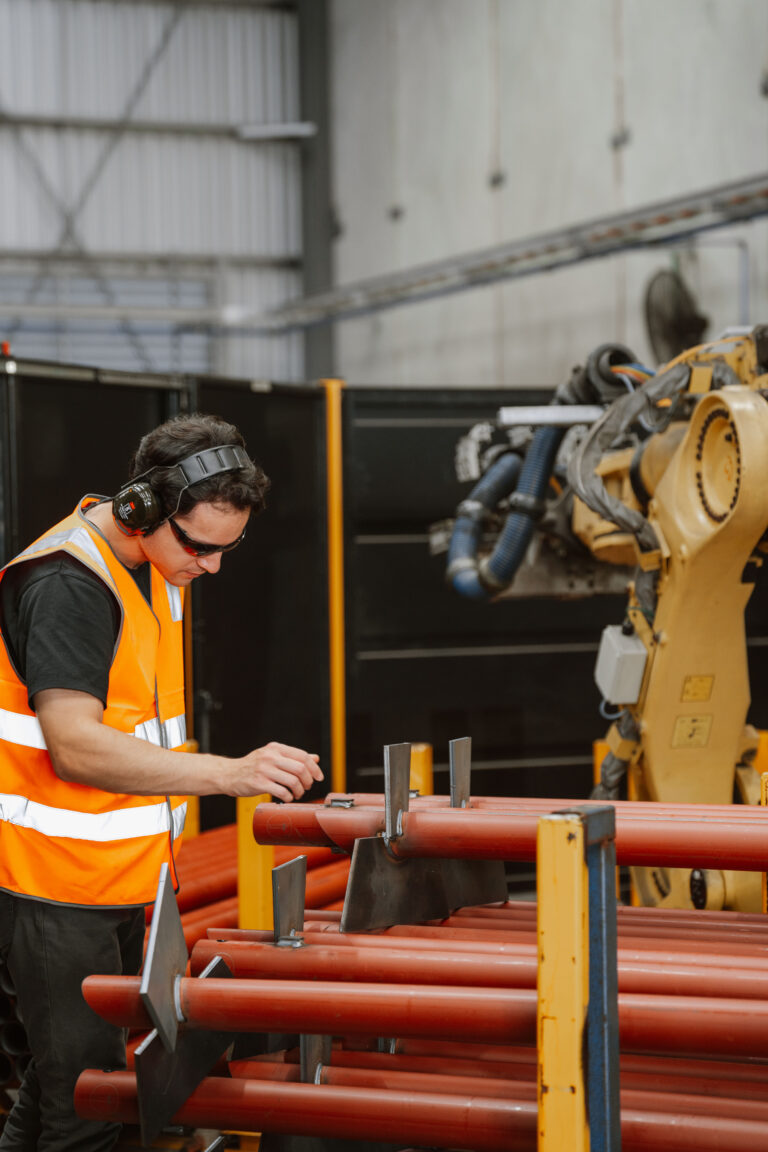
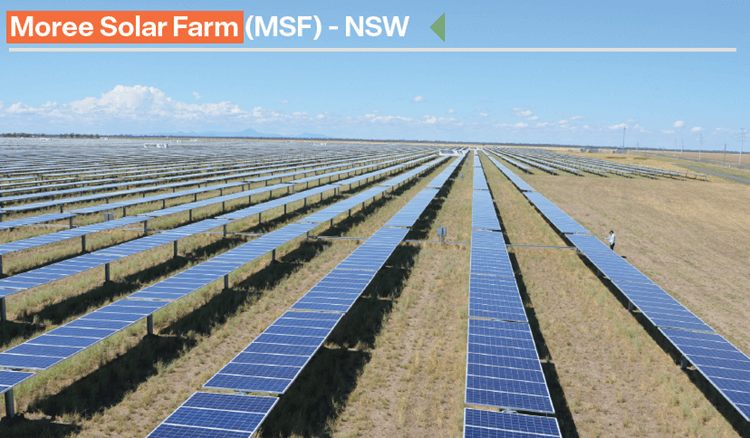
32,000 Solar Blade Piles supplied and installed
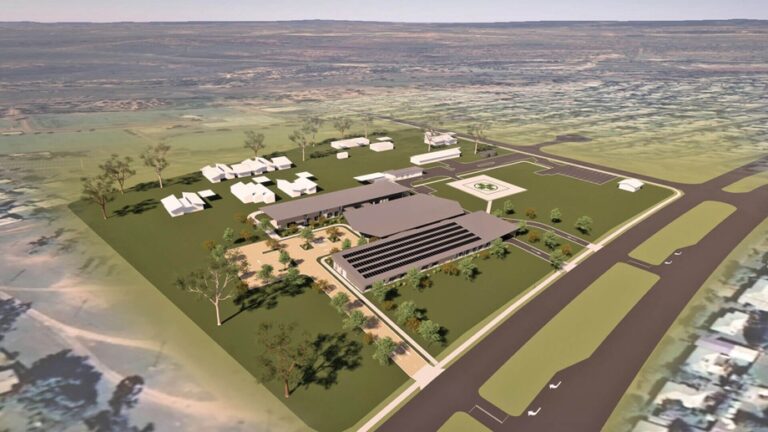
Over 500+ galvanised screw piles
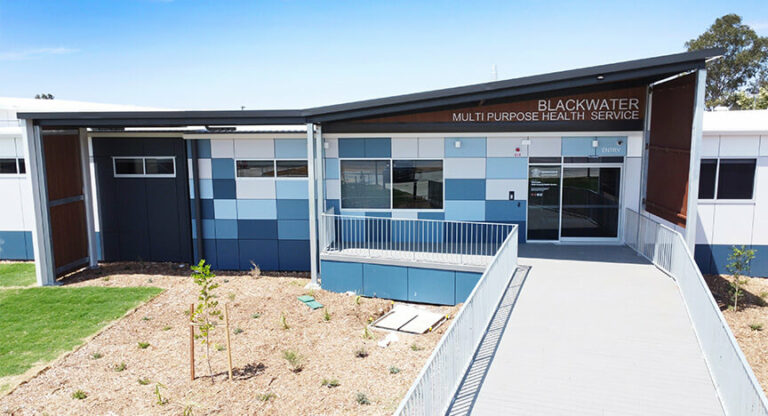
Over 275+ galvanised screw piles
Contact
Blade Pile


NSW Master Distributor – Solid Metal Piling
41 Topham Road, Smeaton Grange NSW 2567
TAS Master Distributor – Channel Earthmoving
Contact Us !

In his capacity as National Manager, Josh spearheads Blade Pile Group’s business development and growth into new markets.
Since joining the organisation in 2018, Josh has brought a diverse knowledge base and bank of experience in construction, business management, logistics and team leadership to the Blade Pile Group.
